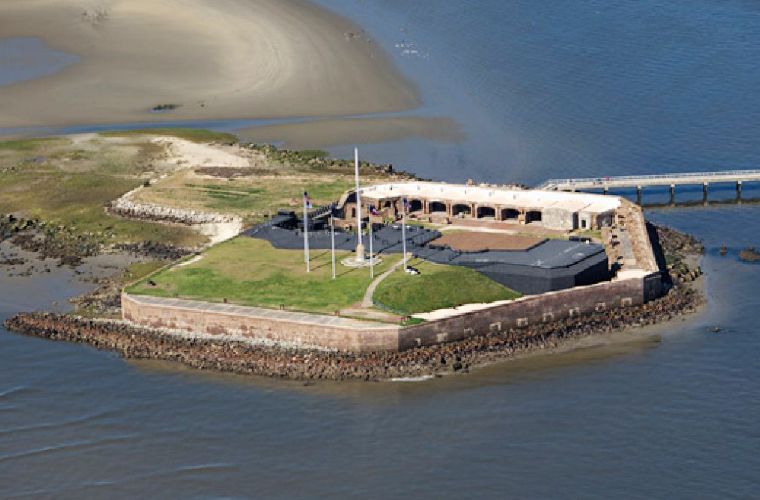Fort Sumter, an island fortification located in Charleston Harbor, South Carolina, is most famous for being the site of the first battle of the American Civil War. Originally constructed in 1829 as a coastal garrison, U.S. Major Robert Anderson occupied the fort in December 1860 following South Carolina’s secession from the Union, initiating a standoff with the state’s militia forces. When President Abraham Lincoln announced plans to resupply the fort, Confederate General P.G.T. Beauregard bombarded Fort Sumter on April 12, 1861, kicking off the Battle of Fort Sumter. After a 34-hour exchange of artillery fire, Anderson and 86 soldiers surrendered the fort on April 13. Confederate troops then occupied Fort Sumter for nearly four years, resisting several bombardments by Union forces before abandoning the garrison prior to William T. Sherman’s capture of Charleston in February 1865.
Fort Sumter was first built in the wake of the War of 1812, which highlighted the United States’ lack of strong coastal defenses. Named for Revolutionary War general and South Carolina native Thomas Sumter, the fortification was one of nearly 50 forts built as part of the so-called Third System, a coastal defense program implemented by Congress in 1817. The three-tiered, five-sided fort’s coastal placement was designed to allow it to control access to the vital Charleston Harbor. While the island itself was only 2.4 acres in size, the fort was built to accommodate a garrison of 650 soldiers and 135 artillery pieces.
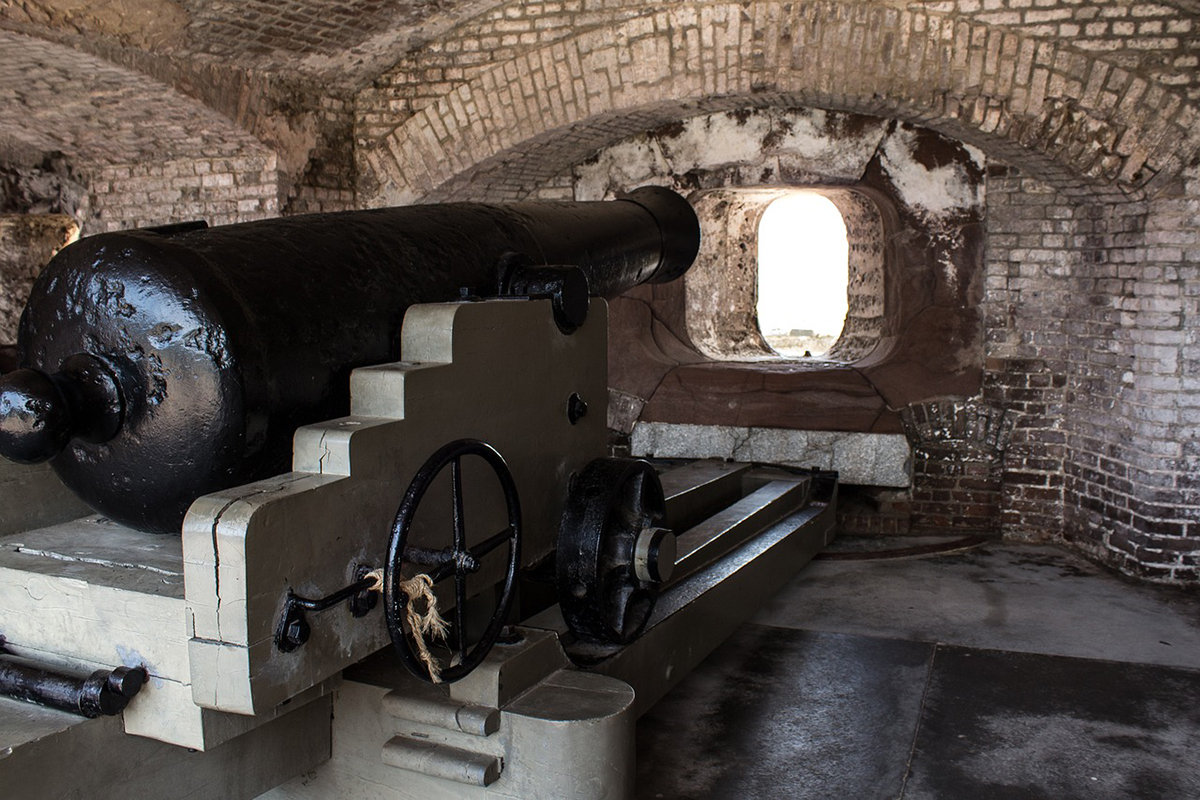
Construction of Fort Sumter first began in 1829 in Charleston Harbor, South Carolina, on a manmade island built from thousands of tons of granite. Building ground to a halt in the 1830s amid a dispute over ownership of the stretch of the harbor, and did not resume until 1841. Like many Third System fortifications, Fort Sumter proved a costly endeavor, and construction slowed again in 1859 due to a lack of funding. By 1860 the island and the outer fortifications were complete, but the fort’s interior and armaments remained unfinished.
Fort Moultrie
Construction of Fort Sumter was still underway when South Carolina seceded from the Union on December 20, 1860. Despite Charleston’s position as a major port, at the time only two companies of federal troops guarded the harbor. Commanded by Major Robert Anderson, these companies were stationed at Fort Moultrie, a dilapidated fortification facing the coastline. Recognizing that Fort Moultrie was vulnerable to a land assault, Anderson elected to abandon it for the more easily defensible Fort Sumter on December 26, 1860. South Carolina militia forces would seize the city’s other forts shortly thereafter, leaving Fort Sumter as the lone federal outpost in Charleston.
Battle of Fort Sumter
A standoff ensued until January 9, 1861, when a ship called Star of the West arrived in Charleston with over 200 U.S. troops and supplies intended for Fort Sumter. South Carolina militia batteries fired upon the vessel as it neared Charleston Harbor, forcing it to turn back to sea. Major Anderson refused repeated calls to abandon Fort Sumter, and by March 1861 there were over 3,000 militia troops besieging his garrison. A number of other U.S. military facilities in the South had already been seized, and Fort Sumter was viewed by many as one of the South’s few remaining hurdles to overcome before achieving sovereignty.
Did you know? There were no casualties during the Confederate bombardment of Fort Sumter at the start of the Civil War. The only Union deaths came during the evacuation: One soldier was killed and another mortally wounded in an accidental explosion during a planned 100-gun salute.
With the inauguration of President Abraham Lincoln in March 1861, the situation soon escalated. Knowing that Anderson and his men were running out of supplies, Lincoln announced his intention to send three unarmed ships to relieve Fort Sumter. Having already declared that any attempt to resupply the fort would be seen as an act of aggression, South Carolina militia forces soon scrambled to respond.
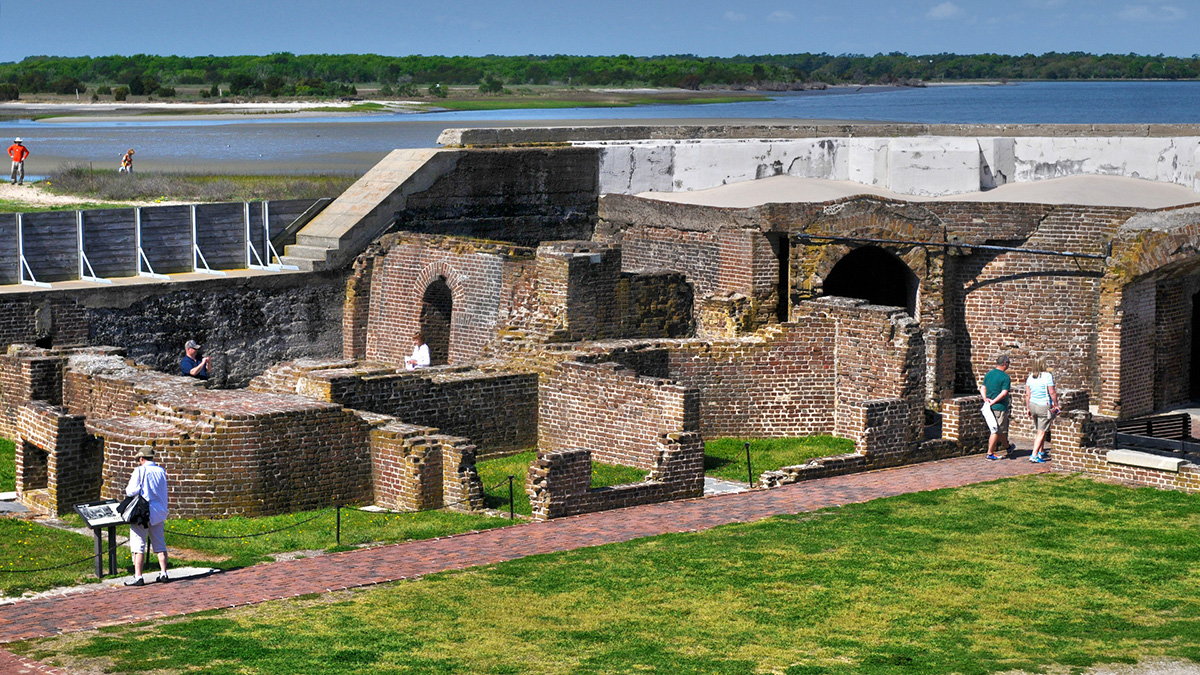
Civil War Begins
On April 11, militia commander P.G.T. Beauregard demanded that Anderson surrender the fort, but Anderson again refused. In response, Beauregard opened fire on Fort Sumter shortly after 4:30 a.m. on April 12, 1861. U.S. Captain Abner Doubleday—later famous for the myth that he invented baseball—ordered the first shots in defense of the fort a few hours later. The first shots of the Civil War had been fired.
Beauregard’s 19 coastal batteries unleashed a punishing barrage on Fort Sumter, eventually firing an estimated 3,000 shots at the citadel in 34 hours. By Saturday, April 13, cannon fire had broken through the fortress’s five-foot-thick brick walls, causing fires inside the post. With his stores of ammunition depleted, Anderson and his Union forces had to surrender the fort shortly after 2 p.m. in the afternoon.
No Union troops had been killed during the bombardment, but two men died the following day in an explosion that occurred during an artillery salute held before the U.S. evacuation. The bombardment of Fort Sumter would play a major part in triggering the Civil War. In the days following the assault, Lincoln issued a call for Union volunteers to quash the rebellion, while more Southern states including Virginia, North Carolina, and Tennessee cast their lot with the Confederacy. Following Beauregard’s bombardment in 1861, Confederate forces occupied Fort Sumter and used it to marshal a defense of Charleston Harbor. Once it was completed and better armed, Fort Sumter allowed the Confederates to create a valuable hole in the Union blockade of the Atlantic seaboard.
The first Union assault on occupied Fort Sumter came in April 1863, when Rear Admiral Samuel Francis Du Pont attempted a naval attack on Charleston. Commander of the South Atlantic Blockading Squadron, Du Pont arrived in Charleston with a fleet of nine ironclad warships, seven of which were updated versions of the famed U.S.S. Monitor.
While Du Pont had hoped to recapture Fort Sumter—by then a symbol of the Confederate rebellion—his attack was poorly coordinated and met with unfavorable weather conditions. In collaboration with Fort Sumter, Confederate batteries commanded by P.G.T. Beauregard hammered the ironclad fleet with artillery fire, and underwater mines posed a constant threat to the ships’ hulls.
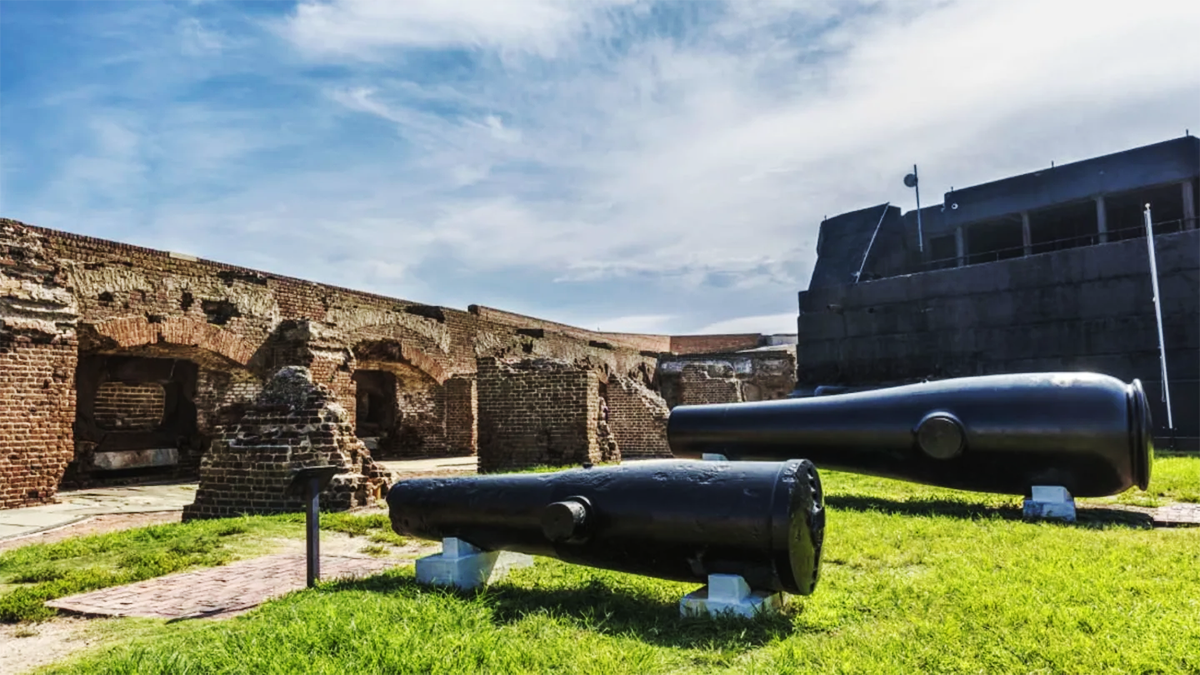
Outgunned and unable to properly maneuver in heavy currents, Du Pont’s fleet eventually withdrew from the harbor after taking over 500 hits by Confederate guns. Only one Union soldier was killed during the battle, but one of the ironclads, Keokuk, sank the next day. Five Confederates were killed during the attack, but the damage to Fort Sumter was soon repaired and its defenses improved. Confederate soldiers even managed to salvage one of Keokuk’s 11-inch Dahlgren guns and mount it on the fortress.
Fort Wagner
In July 1863, Union troops laid siege to Fort Wagner, a valuable post on Morris Island near the mouth of Charleston Harbor. After being met with heavy fire from Fort Sumter, Union General Quincy Adams Gillmore turned his guns on the fort and unleashed a devastating seven-day bombardment. On September 8, a force of nearly 400 Union troops attempted to land at Fort Sumter and capture the post by force. Union Rear Admiral John Dahlgren mistakenly believed the fort was manned by a skeleton crew, but the landing party was met by over 300 Confederate infantry, who easily repulsed the assault.
Following the failed infantry attack, Union forces on Morris Island recommenced their bombing campaign on Fort Sumter. Over the next 15 months, Union artillery effectively leveled Fort Sumter, eventually firing nearly 50,000 projectiles at the fort between September 1863 and February 1865. Despite suffering over 300 casualties from the Union bombardments, the beleaguered Confederate garrison managed to retain control of the fort until February 1865.
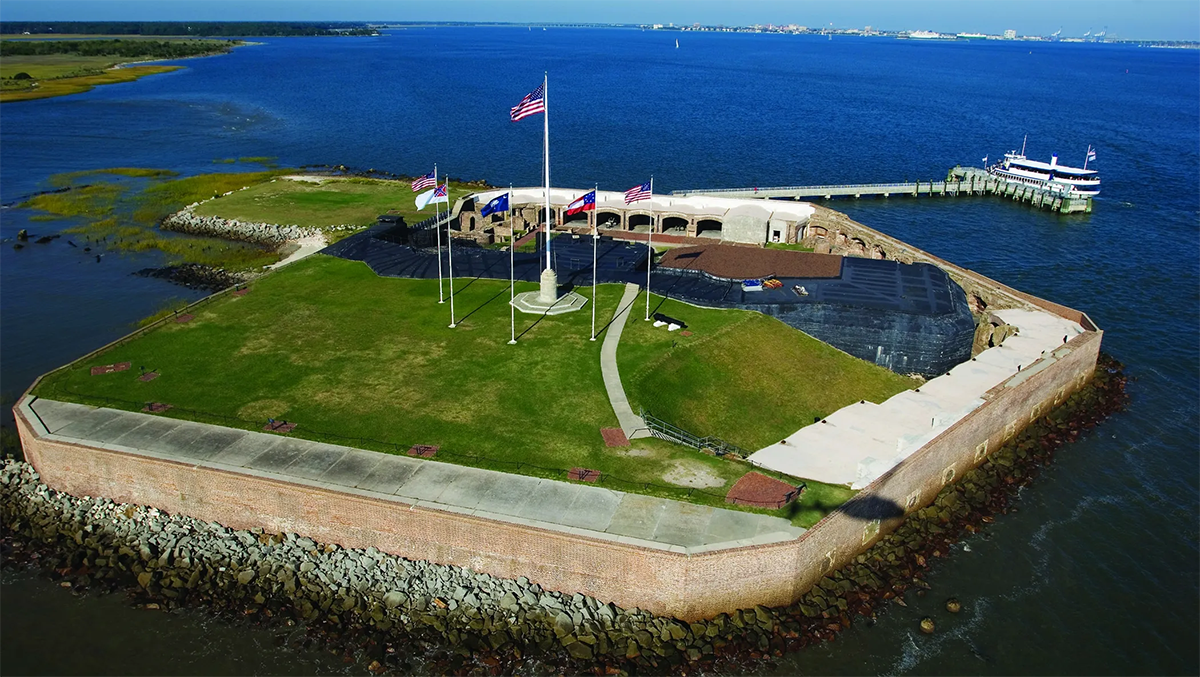
Only when Union General William T. Sherman was poised to capture Charleston did the Confederates finally evacuate? Union forces would reclaim Fort Sumter on February 22, 1865. Robert A. Anderson and Abner Doubleday, the two commanding officers from the original siege of Fort Sumter, would both return to the fortress on April 14, 1865, for a flag-raising ceremony.
Fort Sumter National Monument
After the Civil War, the derelict Fort Sumter was rebuilt and partially redesigned. It would see little use during the 1870s and 1880s and be eventually reduced to serving as a lighthouse station for Charleston Harbor. With the start of the Spanish-American War (1898), the fortress was rearmed and once again used as a coastal defense installation. It would later see service during both World War I and World War II.
In 1948, Fort Sumter was decommissioned as a military post and turned over to the National Park Service as a National Historic Site and part of Fort Sumter and Fort Moultrie National Historical Park. Tours are now available, attracting more than 750,000 visitors every year.

